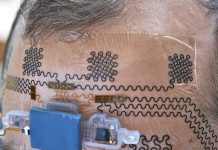
Researchers at the Paris Brain Institute, led by Séverine Mahon, have significantly discovered the brain’s response to oxygen deprivation, challenging traditional views on the finality of brain death.
Published in the journal Neurobiology of Disease, their findings introduce the concept of a “wave of resuscitation” that follows the better-known “wave of death” in brain activity.
The “wave of death” is observed on a flat electroencephalogram (EEG) when the brain lacks oxygen for a prolonged period.
This research suggests that this wave, which starts deep in the brain’s cortex and spreads, extinguishing consciousness, does not always mark permanent death. In cases of successful reoxygenation, a “wave of resuscitation” can occur, signaling a gradual recovery of brain functions.
These findings are pivotal because they offer new insights into which neuron populations are most at risk during a cardiorespiratory arrest. This knowledge could lead to better strategies to minimize neurological damage.
Defining death from a neurological perspective has always been complex. The researchers at Paris Brain Institute previously showed in a study published in Frontiers in Neuroscience that after a period of anoxia (lack of oxygen), the brain undergoes a cascade of changes.
Initially, the brain’s ATP (energy) stores are depleted, disrupting the electrical balance of neurons and causing a massive release of glutamate, an excitatory neurotransmitter.
This release leads to a surge in brain activity, particularly in gamma and beta waves, which Mahon suggests could relate to near-death experiences. Eventually, brain activity dwindles to an electrical silence, marked by a flat EEG.
However, this silence is soon interrupted by the “wave of death,” a high-amplitude wave that leads to neuron depolarization and potentially, neuronal death.
The research team has now explored where in the cortex this wave begins and how it spreads, using rats as models.
They found that the wave of death starts in the pyramidal neurons of layer 5 in the neocortex, then moves upwards towards the brain’s surface and downwards to the white matter.
Remarkably, if the brain is reoxygenated in time, ATP stores are replenished, leading to neuron repolarization and the restoration of synaptic activity.
This suggests that death, from a physiological standpoint, is a process rather than a singular event, and that a flat EEG is not an absolute indicator of irreversible brain function cessation.
The team’s work now focuses on identifying conditions under which brain functions can be restored and developing drugs to support resuscitation in cases of heart and lung failure.
Their discoveries have significant implications for the understanding and treatment of brain anoxia, potentially opening new avenues for saving lives and preserving brain function.
If you care about brain health, please read studies about how the Mediterranean diet could protect your brain health, and blueberry supplements may prevent cognitive decline.
For more information about brain health, please see recent studies about antioxidants that could help reduce dementia risk, and Coconut oil could help improve cognitive function in Alzheimer’s.
The research findings can be found in Neurobiology of Disease.
Copyright © 2023 Knowridge Science Report. All rights reserved.



